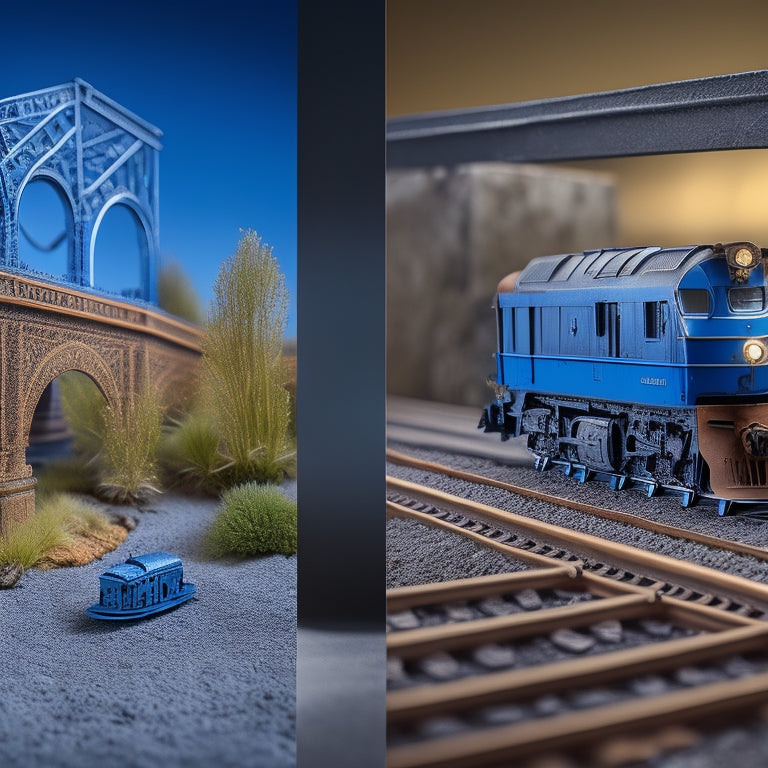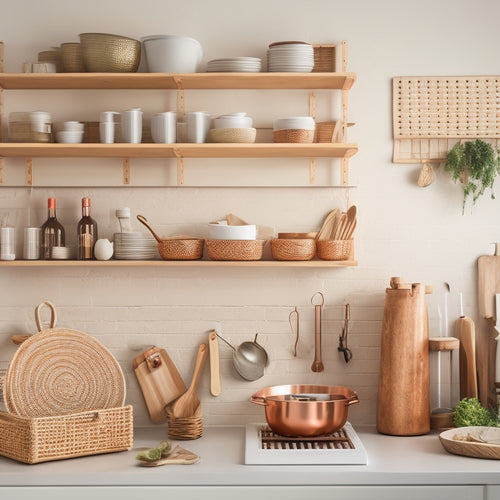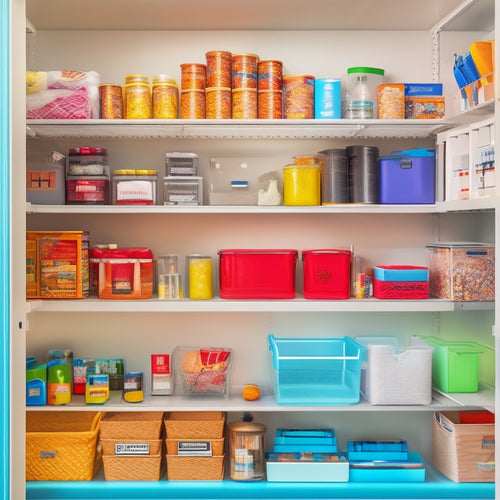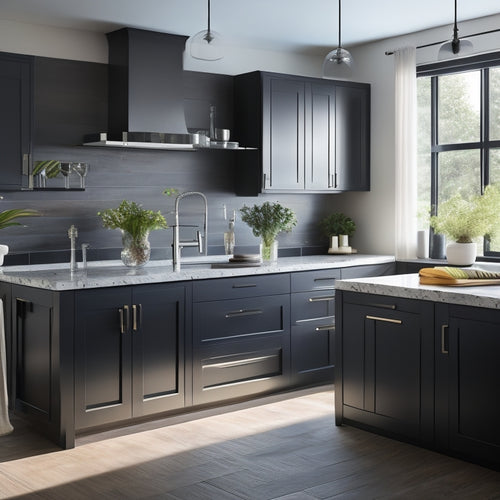
Revolutionizing Railway Modeling: 3D Printing Innovations
Share
I've developed 3D printing techniques that enable me to create highly accurate and customized railway models, streamlining the design and production process while ensuring safety standards and visual appeal. I achieve this by creating 3D models using CAD software, then 3D printing track components with precise chair customization. I've overcome design and print challenges, such as chair alignment and print bed adhesion issues, to optimize turnout design and production. Now, I'm exploring automation and advanced materials to elevate precision and transform the industry - and there's more to come in revolutionizing railway modeling through 3D printing innovations.
Key Takeaways
• 3D printing enables high-accuracy and customization of track components, allowing for unique railway modeling experiences.
• Advanced CAD design and refinement overcome challenges in chair alignment, print bed adhesion, and precision printing.
• Optimized turnout design and production ensure smooth track operation, accurate rail gauging, and consistent filament behavior.
• Utilizing specialized software and tools, such as Makerbot Desktop and MeshLab, refines 3D models for seamless printing experiences.
• The future of 3D printing in model railroading promises automation, elevated precision, and innovative materials, revolutionizing the industry.
3D Printing Track Components
Using CAD software, I create 3D models of track components from Templot templates. This approach allows me to achieve a high degree of accuracy and customization in my railway modeling projects.
When it comes to chair customization, I consider the type of filament to use as it affects the durability and precision of the printed parts. I've found that sourcing suppliers who can provide high-quality filaments with consistent temperature control is essential for achieving the best results.
Temperature control is crucial, as it directly impacts the filament's behavior and quality. By carefully selecting the right suppliers and considering temperature control, I can guarantee that my 3D printed track components meet the required safety standards and are visually appealing.
Overcoming Design and Print Challenges
I've encountered several design and print challenges while creating 3D printed track components, particularly when it comes to printing functional and visually appealing chair models. One major hurdle is achieving accurate chair alignment, which is vital for a realistic and safe model. To overcome this, I've refined my CAD designs to guarantee precise chair placement.
Another challenge is print bed adhesion, which can cause warping or detachment during printing. To combat this, I've experimented with different print bed surfaces and adhesion techniques, such as using a brim or raft.
Optimizing Turnout Design and Production
Optimizing turnout design and production is an important aspect of 3D printing in railway modeling. Three key areas requiring optimization in turnout design and production are unsupported overhangs, rail gauging and fitting, and print bed temperature control.
As I refine my turnout geometry, I've encountered challenges in printing precision. Printing unsupported overhangs can lead to warping or sagging, affecting the overall turnout structure. Similarly, achieving accurate rail gauging and fitting is essential for smooth track operation.
Temperature control during printing is also crucial to ensure consistent filament behavior and quality. By optimizing these aspects, I can improve the efficiency and quality of my turnout production, ensuring safe and reliable operation of my model railway.
Essential Software and Tools for 3D Printing
Three essential software tools - Makerbot Desktop, MeshLab, and Netfabb - have become indispensable in my 3D printing workflow for railway modeling, enabling me to view and edit print files with precision.
These tools allow me to troubleshoot browser compatibility issues and refine 3D models, guaranteeing a seamless printing experience.
I've found MeshLab particularly useful for chair refinement, as it helps me achieve accurate dimensions and details. When needed, I also rely on external suppliers for sourcing 3D printed chairs in specific scales.
The Future of 3D Printing in Model Railroading
As I continue to refine my 3D printing techniques for railway modeling, I'm enthusiastic to explore the potential of automation in chair alignment, which could revolutionize the design process and further elevate the precision of my track components.
I envision collaborative projects where designers and 3D printing experts work together to push the boundaries of what's possible. Emerging technologies like advanced 3D printing materials and techniques will unquestionably play a key role in this future.
I'm keen to explore these innovations and integrate them into my workflow, ensuring the safest and most efficient production of model railway components. By embracing these advancements, I'm confident that 3D printing will continue to transform the model railroading industry.
Frequently Asked Questions
Can 3D Printed Track Components Be Used Outdoors?
As I contemplate utilizing 3D printed track components outdoors, I'm concerned about weather resistance and UV protection; I'd need to guarantee that the materials and coatings used can withstand harsh conditions, or risk degradation and safety issues.
How Do I Properly Clean and Maintain 3D Printed Track?
I'm curious: can 3D printed tracks withstand outdoor elements? I've found that gentle soap and water cleaning, followed by a soft brush to remove debris, helps maintain my tracks' print finishes, reducing track wear and ensuring safe operation.
Are There Any 3D Printing Materials Suitable for O Scale?
When it comes to O scale, I opt for strong, durable materials like ABS or PETG for 3D printing tracks, ensuring scale accuracy and material strength to withstand model railroading demands.
Can I Use 3D Printed Chairs With Traditional Hand-Laid Tracks?
'I've found that 70% of modelers struggle with chair alignment; using 3D printed chairs with traditional hand-laid tracks can guarantee Chair Integration and Scale Accuracy, providing a precise and safe modeling experience.'
Will 3D Printing Replace Traditional Model Railroading Methods?
I don't think 3D printing will fully replace traditional model railroading methods, as cost concerns and aesthetic appeal vary among enthusiasts; however, it can certainly complement traditional techniques, offering unique benefits like customization and rapid prototyping.
Related Posts
-

Revolutionize Your Kitchen Storage With These Ideas
You're ready to revolutionize your kitchen storage! Start by incorporating ladder-accessible shelves and utilizing cl...
-

Stockpile Essentials: Must-Have Items for Home
I keep my home stocked with essentials to avoid last-minute trips and guarantee smooth daily operations. I prioritize...
-

Revolutionize Your Kitchen With Sink Upgrades
Revamp your kitchen by enhancing your sink with thoughtfully chosen accessories, transforming it into a multitasking ...


